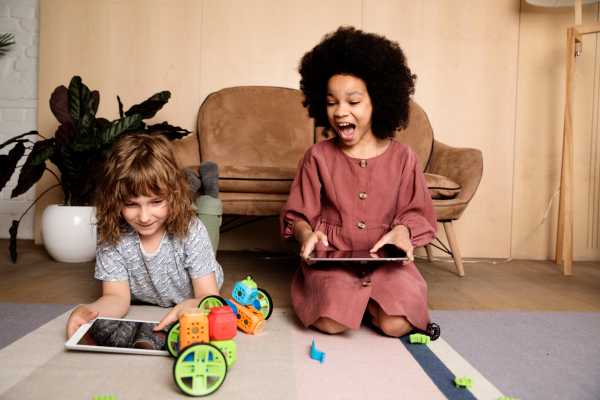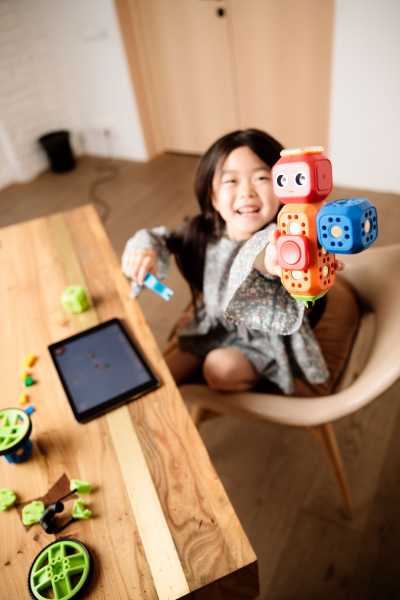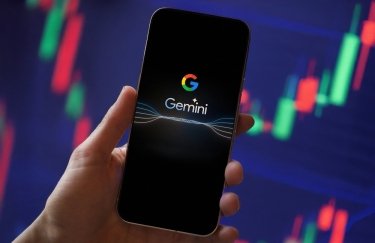
This story is part of a group of stories called

On a Christmas morning in the early 2000s, my mom found herself slaving over a freshly unwrapped copy of Lego Mindstorms: Star Wars. The commercials aired on Cartoon Network for months, offering a fantasy that was too appealing for me to pass up: Supposedly, with a sturdy hard drive, an elementary understanding of computer science, and my own recess-honed Lego skills, a 10-year-old like me could construct and program his very own AT-ST mech from The Empire Strikes Back all by himself. With a press of a button, my robot would be able to walk along the kitchen table and swing its head side to side.
This was catnip for any parent; not only would your kid live the glory of a Sith Empire architect, they’d also learn the fundamentals of programming. It would’ve been a picture-perfect success story: from Lego Mindstorms to Google in less than a decade.
But this is not what happened. I spent most of that Christmas watching from the sidelines, mystified by the arcane instructions, as my mom worked to crack the code and bring the heap of plastic to life. Eventually, she figured it out. We mounted the AT-ST in my bedroom, and I don’t think any of us touched that Mindstorms kit ever again. I learned absolutely nothing in the process.
This was the main issue that Anna Iarotska, one of the co-founders of Robo Wunderkind, wanted to solve. Her company produces one of many STEM-related toys flooding the market today. She tells me that Lego Mindstorms was one of her primary influences when she set out to create a children’s robotics kit, which allows kids to build and program their own miniature mechanized companions. The only thing she needed to do was lower the barrier to entry. “We loved [Mindstorms,] but it was too complex,” she says. “It had a very high entry point.”
Robo Wunderkind developed its own simplified coding language, based on colors and symbols
You see that design praxis as soon as you remove Wunderkind from its box. Instead of a billion tiny Legos, the Wunderkind components look like big, chunky Melissa & Doug blocks — each tipped with silicon sensors and plastic stubs, so they can be easily snapped together like Playstix. The instructions include a QR code, which downloads an app to your phone or tablet that allows you full programming control of all those blocks. So when you snap a rivet to the central chassis, you press a tab on your phone, where you can input what you’d like that rivet to do and how long you want it to do it.
The kit comes with a flashlight, two tires, a big red button, and a mess of cogs and gears. On the app, you have access to several basic computational inputs, like a “stop” or a “go” command, and a suite of noises — like a cat’s meow — that your robot can push through its speakers. Iarotska says the team at Robo Wunderkind developed their own simplified coding language, based on colors and symbols rather than numbers and words, so the toy can best hit its target demographic: children between the ages of 5 and 10.
”Children at this age are just learning to read and write. … After analyzing our options, we chose to use ‘flowchart programming.’ It’s the basics of all programming logic,” she explains. “We put a lot of thought into it so we could hit the spot that’s perfect for this age group. It’s an easy start, but it [can lead] to programming more and more difficult things.”
As one of the journalists constantly being told to learn to code on Twitter, I was humbled when I resolved to turn my Robo Wunderkind kit into a makeshift car and was only able to get one of the two wheels working. The car spun in listless circles around my bed, came to a grumpy stop, and meowed at me. (I checked, and yes, I did ask my robot to meow.) At 28 years old, decades after my Mindstorms experience, I’m still not much of a programmer.
It’s a fact of life: Coding is hard, for anyone at any age. But that hasn’t stopped toy companies from trying to bring computer science to elementary schools. Over the past five years, there’s been a huge boom in children’s recreation that aims to teach kids basic coding literacy, essentially merging the rules of playtime and the rules of JavaScript into one.
The term most education experts use for these products is STEM — science, technology, engineering, and math. So “STEM toy” refers to any piece of children’s entertainment that engages with one of those mechanical principles. The ancestors of the current STEM toy movement are classics like Legos and Rubik’s cubes, but lately the philosophy behind those toys is being adapted for the digital age — specifically to teach kids coding and robotics.
And Robo Wunderkind is just the tip of the iceberg. The Chinese company Makeblock offers several DIY programming kits, including one where children can construct their own drones. With a Bitsbox subscription, every month your kids will receive a new create-an-app adventure. Kano, a British company founded in 2013, released a Harry Potter coding kit last year where grade-schoolers feed binary code directly to a magic wand.
It isn’t just startups, either. Lego and Fisher-Price have both emerged as major players in the STEM movement, releasing a wide variety of coding boxes under a number of names. (Yes, even Duplo can teach you to code now.) Major retailers like Target now host STEM displays in their stores, and Amazon recently launched its own subscription service called STEM Club, which delivers science- and tech-themed toys directly to doorsteps every month. Altogether, THE Journal, a magazine that covers K-12 educational technology, estimates that the STEM toy market will grow 10 percent by 2021.
For now, we don’t know how effective these toys are. There are no academic studies focusing on the impact of modern programming toys on children’s development, nor has there been wide-ranging research on why this market is ballooning or why parents are flocking to STEM aisles in the first place. That’s the one thing Ken Seiter, executive vice president of the Toy Association, makes clear when I reached him over the phone — the trend is simply too new for us to have valuable data points.
What we do have is a survey the association conducted in May, which asked 2,000 parents a series of questions about science, technology, art, and mathematics, as a way to “investigate their thoughts, fears, and beliefs” in how those disparate fields intersect with their children’s educational prospects. The Toy Association found that 85 percent of the parents surveyed wanted their kids to develop some fundamental coding skills, and also believed the ideal age for children to start acquiring those abilities is between 6 and 7. More broadly, 76 percent of the parents surveyed wanted their kids to end up in some sort of STEM-related career. Doctors, web developers, engineers, and scientists emerged as their top choices.
These results perturbed Seiter. “The consensus was that five and a half was the ideal age to get a kid started on their future career path. That’s a little extreme,” he says. “I’m a child of the ’60s. I’ve had about four different careers. [So] it kinda startled me a little bit.”
China had 4.7 million recent STEM graduates in 2016, while the United States had only 568,000
Seiter notes that the majority of the parents the Toy Association surveyed are millennials, and he speculates that their age means they’re more acutely aware of the economy we’re quickly inheriting. It is undeniable that STEM jobs are bringing in more money, and are becoming more in demand, compared to the rest of the American workforce. (One estimate says the number of STEM jobs will grow by nearly 11 percent by 2026.) There’s also reason to believe that the American education system is not adequately preparing its students to fill those careers. Forbes notes that China had 4.7 million recent STEM graduates in 2016, while the United States had only 568,000.
The parents “see what’s going on in the world,” says Seiter. “They see the educational programs in Germany and China, and they say, ‘How are my kids going to be able to compete? I’m going to have to play catch-up.’”
Those factors aside, he says, no parent can underestimate playtime. One of the projects the Toy Association has spearheaded is called “the Genius of Play,” and it’s founded on the idea that kids can teach themselves some incredible things when all they’re focused on is enjoying themselves. “When a child is really relaxed, and allowed to do what they want to do, their learning escalates,” he says. That same philosophy crosses over into the way the association defines any STEM toy: First and foremost, it has to be fun.
It’s a question that was on my mind when I spoke to Alex Klein, the founder and CEO of Kano, which created that Harry Potter coding tool. Kano, compared to all the other companies in the STEM space, has a product line that straddles the gap between toy and tool the most. The Harry Potter wand might be fairly breezy, but you can also step up to the Kano PC — which, for $300, allows anyone to build a Windows 10-powered computer from scratch.
Unlike Robo Wunderkind, Kano doesn’t teach you a fictional coding language; instead, you’re confronted with Java, Unix, and Python from the start. If you’re going to teach your homemade computer to meow, you will do it the old-fashioned way.

Klein likens the era we’re living in now to the Middle Ages. We’re all fluent with computers, phones, and tablets, but there’s a select gentry — the 20 million people in the world who know how to code — who are able to read the “sacred texts.” “The world is full of possibilities and potential, but only a few today are able to participate in that potential,” he says. “So how do we bring [programming] to the same place as reading, writing, and arithmetic?”
But for all of that fervor, Klein pushes back on the economic anxiety highlighted in the Toy Association survey. Instead, he posits that the study of programming is like the study of human thought — similar to learning all the colors in the spectrum in order to paint your first picture. It’s a responsibility, he says, “to deliver recreation that delivers information.”
Klein considers Generation Z, and how they’ll never remember a time when they weren’t online. He thinks of millennials, and how amorphous the divisions between our social, recreational, educational, and occupational responsibilities have already become — how we use our phones for a million independent needs every day. Maybe, in 2019, it’s easier than ever to think of a computer-building kit as a toy.
Sign up for The Goods’ newsletter. Twice a week, we’ll send you the best Goods stories exploring what we buy, why we buy it, and why it matters.
Sourse: vox.com






